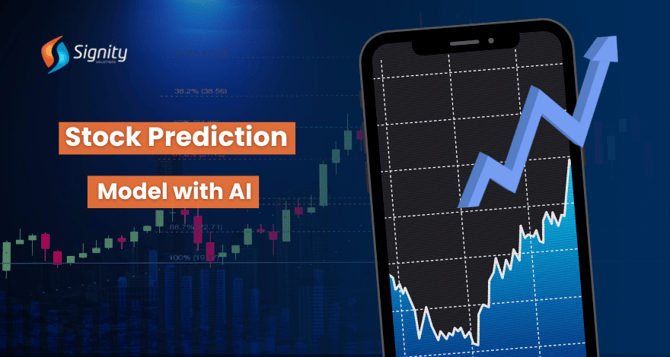Building a Stock Prediction Model with AI: A Step-by-Step Guide
Delving into finance and AI synergy, this project crafts a stock prediction model. Using LSTM neural networks, it preprocesses data, creates a training set, and trains with Adam optimizer. A concise script offering a framework for AI-driven stock price forecasting

Stock prediction is a challenging yet lucrative endeavor that has attracted the attention of investors, traders, and researchers alike. With the advent of artificial intelligence (AI) and machine learning, building accurate stock prediction models has become more feasible than ever before. In this article, we'll provide a comprehensive guide on how to build a stock prediction model using AI, covering key concepts, data preparation, model development, and evaluation.
Understanding Stock Prediction with AI
Stock prediction involves forecasting the future price movements of financial assets based on historical data and market indicators. AI techniques, such as machine learning and deep learning, have shown promise in capturing complex patterns and trends in stock market data, making them suitable for building predictive models.
Data Collection and Preparation
The first step in building a stock prediction model is to collect historical stock price data, along with relevant market indicators such as trading volume, moving averages, and technical indicators. This data can be obtained from various sources, including financial APIs, market databases, and online repositories.
Once the data is collected, it needs to be preprocessed and cleaned to remove noise, missing values, and outliers. Additionally, features may need to be engineered or transformed to extract relevant information for the prediction task. Common preprocessing steps include normalization, scaling, and feature selection..jpg?width=1200&height=250&name=How%20to%20Build%20an%20App%20With%20ChatGPT%20(1).jpg)
Model Development
Several AI techniques can be used to build stock prediction models, including:
Linear Regression: Simple yet effective for predicting continuous values, such as stock prices.
Support Vector Machines (SVM): Suitable for both classification and regression tasks, SVMs can capture nonlinear relationships in the data.
Recurrent Neural Networks (RNNs): Particularly well-suited for sequential data, RNNs can capture temporal dependencies in stock price movements.
Long Short-Term Memory (LSTM) Networks: A type of RNN designed to address the vanishing gradient problem, LSTMs are widely used for time series prediction tasks.
For this guide, we'll focus on building a stock prediction model using LSTM networks due to their effectiveness in capturing temporal dependencies.
Technical Implementation with TensorFlow
Let's walk through the technical implementation of building a stock prediction model using LSTM networks with TensorFlow:





Evaluation and Testing
Once the model is trained, it can be evaluated using a separate test dataset. Performance metrics such as mean squared error (MSE) or root mean squared error (RMSE) can be used to assess the model's accuracy in predicting stock prices. Additionally, visualizing the predicted prices against the actual prices can provide insights into the model's performance.
Conclusion
Building a stock prediction model with AI involves collecting and preprocessing historical stock data, developing a predictive model using AI techniques such as LSTM networks, and evaluating the model's performance.
While AI-based stock prediction models can offer valuable insights for investors and traders, it's important to note that stock market prediction is inherently uncertain, and models should be used as tools to support decision-making rather than as definitive predictors of future price movements.














